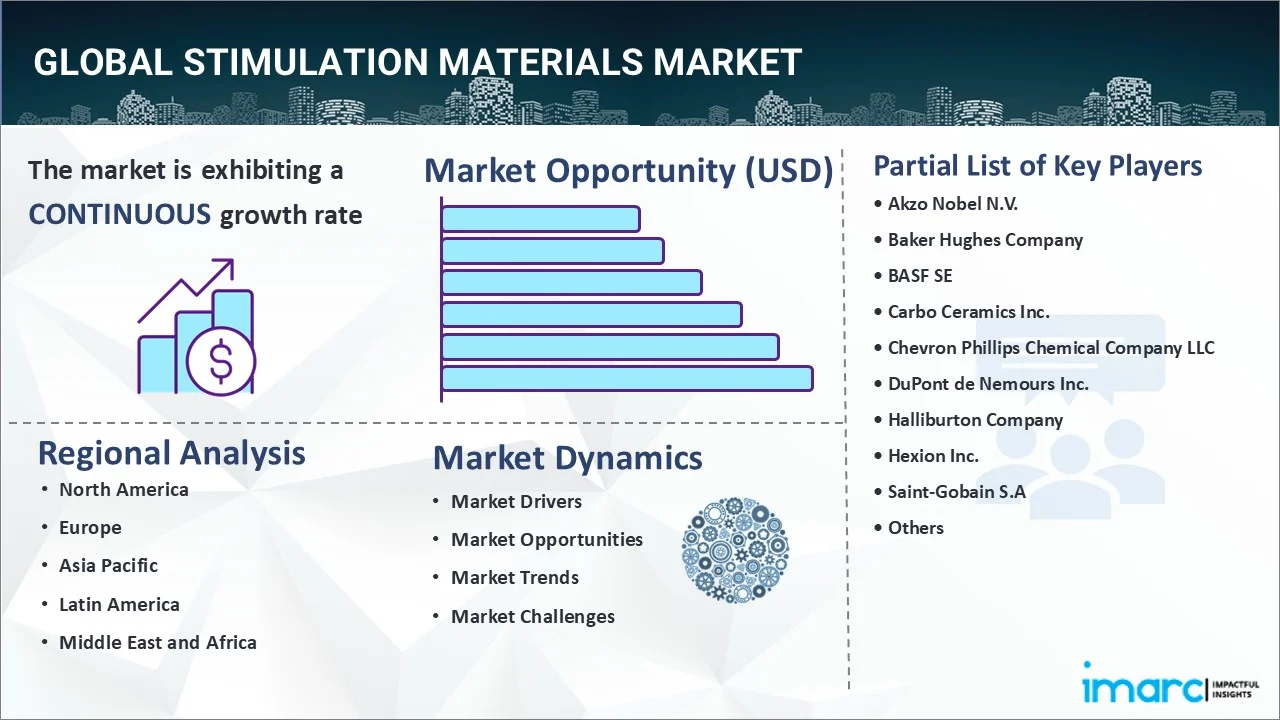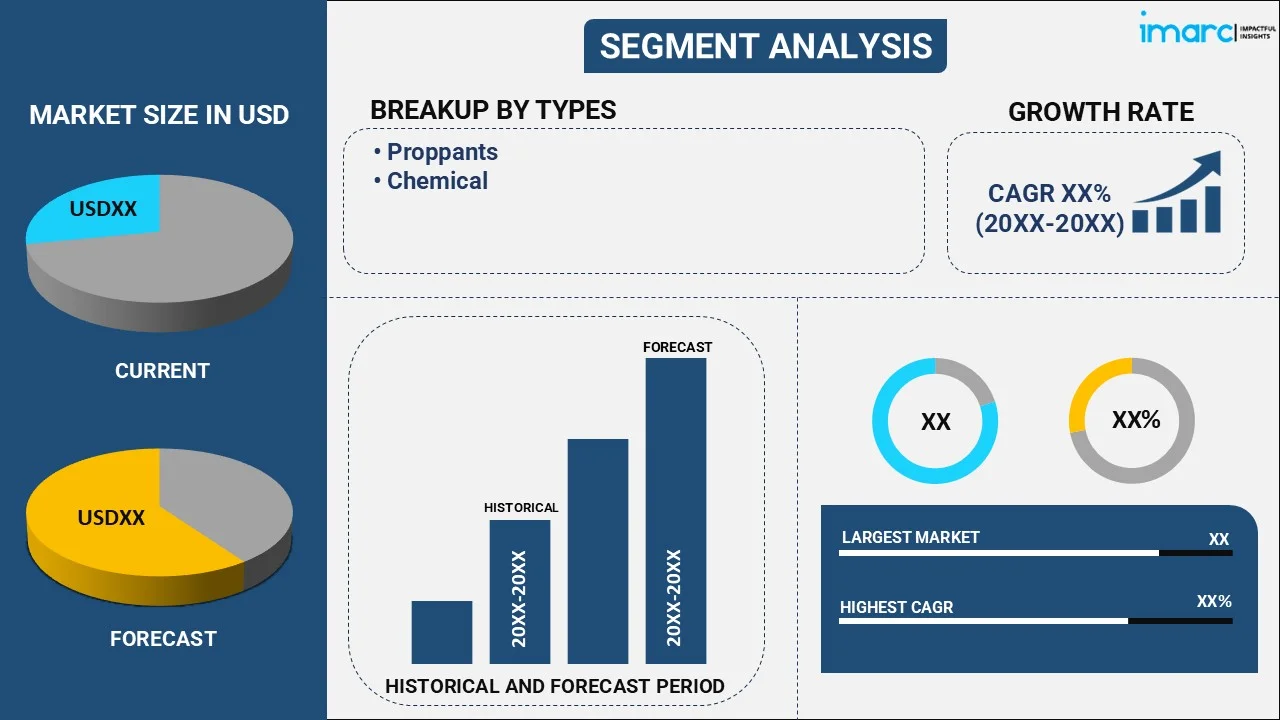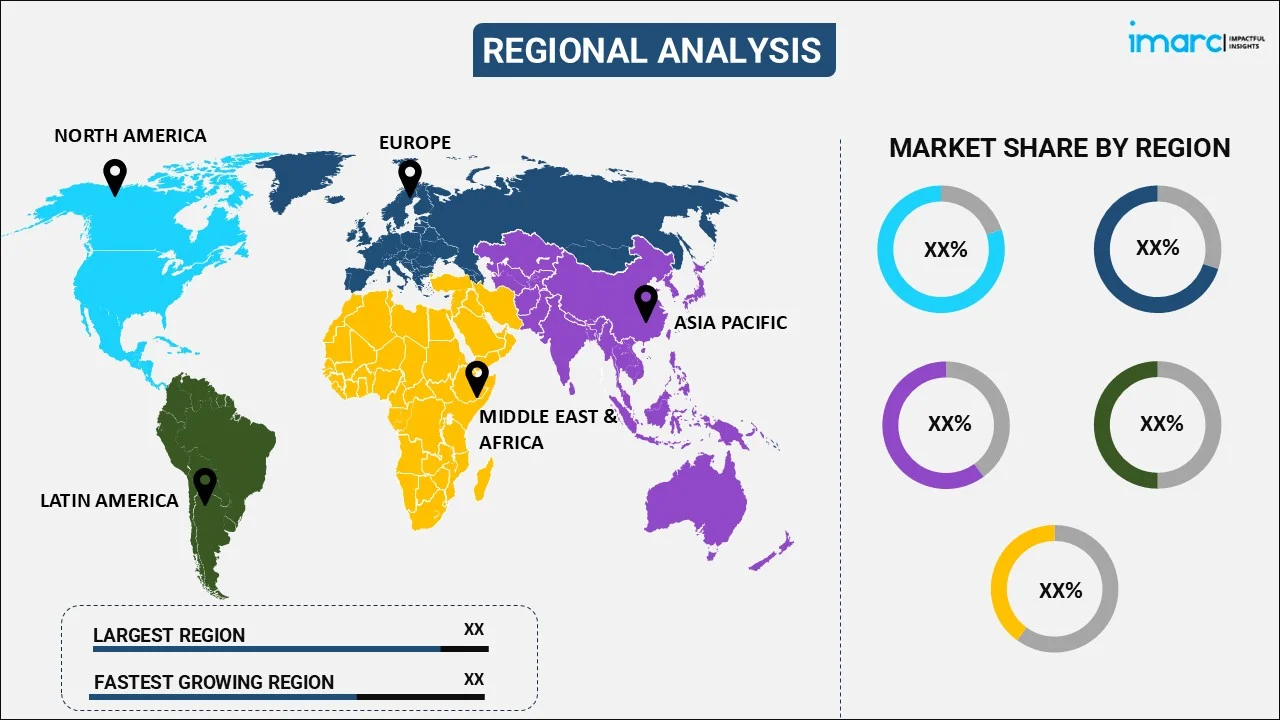
Stimulation Materials Market Report by Type (Proppants, Chemical), Technology (Hydraulic Fracturing, Acidization), Application (Onshore, Offshore), and Region 2025-2033
Market Overview:
The global stimulation materials market size reached USD 65.5 Billion in 2024. Looking forward, IMARC Group expects the market to reach USD 146.6 Billion by 2033, exhibiting a growth rate (CAGR) of 9.4% during 2025-2033.
|
Report Attribute
|
Key Statistics
|
|---|---|
|
Base Year
|
2024
|
|
Forecast Years
|
2025-2033
|
|
Historical Years
|
2019-2024
|
|
Market Size in 2024
|
USD 65.5 Billion |
|
Market Forecast in 2033
|
USD 146.6 Billion |
| Market Growth Rate 2025-2033 | 9.4% |
Stimulation materials are used in oil and gas wells to inject microbes and remove deposits of heavy components, such as wax and asphaltene. They generally comprise proppants, including coated sand, raw frac, clay-based ceramic, and sintered bauxite. Nowadays, leading manufacturers are introducing ultra-lightweight proppants that reduce frac height, injected fluids, and the need for wellbore cleanouts. They are also offering standard and customized chemical solutions for enhancing the stimulation process and the flow of oil and gas. These solutions include advanced integrated fluid systems like crosslinkers, breakers, buffers, clay control, surfactants, biocides, friction reducers, scale inhibitors, and gelling systems.

Stimulation Materials Market Trends:
The increasing need for fuel is positively influencing the use of shale gas worldwide. This represents one of the major factors influencing the demand for stimulation materials worldwide for extracting shale gas via hydraulic fracking in hydrocarbon reservoirs. Moreover, governments of numerous countries are implementing stringent regulations to minimize the negative effects of hydraulic fracking. This, in turn, is promoting the adoption of green materials with less impact on the environment. Apart from this, advances in hydraulic fracturing technology, such as horizontal drilling, high-volume, and multistage, along with the development of shale resources, are driving the demand for new stimulation materials to improve drilling efficiencies. The rising oil and gas prices worldwide are also encouraging companies to adopt advanced methods like stimulation. Furthermore, key manufacturers are introducing products that provide thermal stability and chemical and crush resistance and prevent proppant flow back in high-temperature and closure stress environments during the fracturing of deep gas and oil wells. They are also offering value-added coated sand and ceramic proppants that minimize water usage while increasing well productivity. These innovations are projected to impel the growth of the market.
Key Market Segmentation:
IMARC Group provides an analysis of the key trends in each sub-segment of the global stimulation materials market report, along with forecasts at the global, regional and country level from 2025-2033. Our report has categorized the market based on type, technology and application.
Breakup by Type:

- Proppants
- Frac Sand
- Resin Coated
- Ceramic
- Chemical
- Surfactants
- Gelling Agents
- Friction Reducers
- Breakers
- Crosslinking Agents
- Corrosion and Scale Inhibitors
- Biocides
- Others
Breakup by Technology:
- Hydraulic Fracturing
- Multistage Fracturing
- Re-fracturing
- Acidization
- Hydrochloric Acid Wash
- Matrix Acid Stimulation
- Acid Fracturing
Breakup by Application:
- Onshore
- Offshore
Breakup by Region:

- North America
- United States
- Canada
- Asia-Pacific
- China
- Japan
- India
- South Korea
- Australia
- Indonesia
- Others
- Europe
- Germany
- France
- United Kingdom
- Italy
- Spain
- Russia
- Others
- Latin America
- Brazil
- Mexico
- Others
- Middle East and Africa
Competitive Landscape:
The competitive landscape of the industry has also been examined along with the profiles of the key players being Akzo Nobel N.V., Baker Hughes Company, BASF SE, Carbo Ceramics Inc., Chevron Phillips Chemical Company LLC, DuPont de Nemours Inc., Halliburton Company, Hexion Inc., Saint-Gobain S.A, Schlumberger Limited and Solvay S.A.
Report Coverage:
| Report Features | Details |
|---|---|
| Base Year of the Analysis | 2024 |
| Historical Period | 2019-2024 |
| Forecast Period | 2025-2033 |
| Units | Billion USD |
| Segment Coverage | Type, Technology, Application, Region |
| Region Covered | Asia Pacific, Europe, North America, Latin America, Middle East and Africa |
| Countries Covered | United States, Canada, Germany, France, United Kingdom, Italy, Spain, Russia, China, Japan, India, South Korea, Australia, Indonesia, Brazil, Mexico |
| Companies Covered | Akzo Nobel N.V., Baker Hughes Company, BASF SE, Carbo Ceramics Inc., Chevron Phillips Chemical Company LLC, DuPont de Nemours Inc., Halliburton Company, Hexion Inc., Saint-Gobain S.A, Schlumberger Limited and Solvay S.A |
| Customization Scope | 10% Free Customization |
| Post-Sale Analyst Support | 10-12 Weeks |
| Delivery Format | PDF and Excel through Email (We can also provide the editable version of the report in PPT/Word format on special request) |
Key Questions Answered in This Report
The stimulation materials market was valued at USD 65.5 Billion in 2024.
IMARC estimates the stimulation materials market to exhibit a CAGR of 9.4% during 2025-2033.
The growing demand for digital marketing and SEO services, increasing use of search engines and online content consumption, rising importance of online visibility and brand recognition, expansion of e-commerce and online advertising, and advancements in artificial intelligence and keyword analysis tools are the primary factors driving the stimulation materials market.
Some of the major players in the stimulation materials market include Akzo Nobel N.V., Baker Hughes Company, BASF SE, Carbo Ceramics Inc., Chevron Phillips Chemical Company LLC, DuPont de Nemours Inc., Halliburton Company, Hexion Inc., Saint-Gobain S.A, Schlumberger Limited, Solvay S.A., etc.
Need more help?
- Speak to our experienced analysts for insights on the current market scenarios.
- Include additional segments and countries to customize the report as per your requirement.
- Gain an unparalleled competitive advantage in your domain by understanding how to utilize the report and positively impacting your operations and revenue.
- For further assistance, please connect with our analysts.
 Inquire Before Buying
Inquire Before Buying
 Speak to an Analyst
Speak to an Analyst
 Request Brochure
Request Brochure
 Request Customization
Request Customization




.webp)




.webp)












